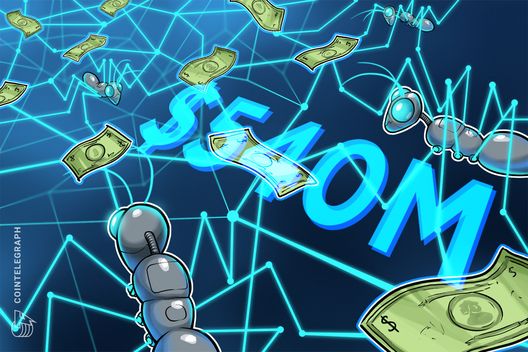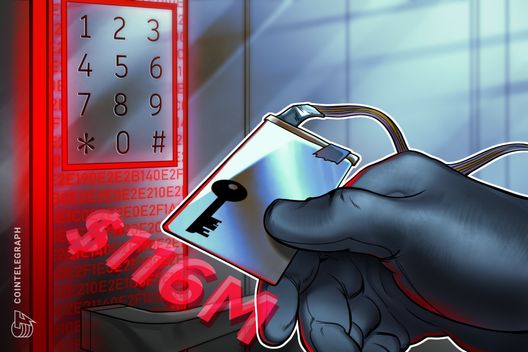Powell: Fed is in no hurry to lower interest rates
4 min read

Andrew Harrer/Bloomberg
Federal Reserve Chair Jerome Powell sees no reason to rush the process of
In a speech delivered Thursday afternoon in Dallas, Powell said the U.S. economy is strong and inflation is
Because of those bumps — including a slight uptick in the consumer price index, or CPI, measure of inflation for October — Powell said the Federal Open Market Committee will move cautiously as it makes its policy less restrictive.
“In considering additional adjustments to the target range for the federal funds rate, we will carefully assess incoming data, the evolving outlook, and the balance of risks,” Powell said. “The economy is not sending any signals that we need to be in a hurry to lower rates.”
The Fed has lowered interest rates by 75 basis points during its past two meetings, including a quarter-point cut
The comments, delivered at an event hosted by the Federal Reserve Bank of Dallas, come one day after the release of the October CPI report, which showed headline running at a 2.6% annualized pace last month, up from 2.4% in September and breaking a monthslong streak of moderating price growth.
Based on that report, Powell said the Fed’s
Following the speech, Powell participated in a wide ranging interview with Catherine Rampell, a columnist for the Washington Post. During the question and answer session, Powell said the FOMC could slow the pace of rate cuts as it nears a policy rate it feels is “neutral” — meaning it neither stimulates nor dampens economic activity.
Powell also fielded questions about the
Powell reiterated his view that the Fed’s ability to set monetary policy free of outside influence has served the country well and enjoys
As for the implications of various components of the Trump platform — including broader use of tariffs, tax cuts and mass deportation of undocumented immigrants — Powell largely avoided weighing in on specifics. On matters directly related to economic policy, he said it was too soon to make any judgments about how they might impact the Fed’s monetary policymaking.
“We will do what we believe is the right thing, that’s what we’re always going to do, but I think it’s really important to reserve judgment and see how this plays out,” he said. “We’re still months away from a new administration, let alone knowing the real details of what’s going to happen and then being able to project what will be the net effects on the economy.”
Fed staffers will compile reports on the various potential fiscal outcomes of the next Trump presidency, Powell said. But, unlike in December 2016 — when FOMC members updated their quarterly forecasts to include projections about anticipated tax cuts under the first Trump administration — Powell said he does not anticipate the committee incorporating any policy proposals into their economic projections next month.
“The job of staff is to go and be very nimble and make assessments in real time, much like capital markets do,” he said. “Policymakers are going to wait longer to see what the actual effects will be.”
Similarly, the Fed will analyze the year-end appropriations bill that Congress must pass to keep the government funded. But Powell said the implications of that legislation will take months and sometimes years to play out, so it is unlikely to influence near-term policy decisions.
“It won’t have any economic effects this year, but it’ll be ’26 or ’27, so I think we have time to make assessments about what the net effects of policy changes will be on the economy before we react with policy,” he said.
Powell repeated his warning about the national debt, asserting that the level of indebtedness is not a problem yet but the country’s borrowing path is unsustainable, because it exceeds gross domestic product. He also added a bit of urgency to the boilerplate warning.
“We’re going to need to address that, and it’s going to need to be done sooner or later,” he said. “And sooner is better than later.”
The conversation briefly turned to labor market productivity, which the Fed has attributed to the U.S. economy’s continued growth despite restrictive monetary conditions. He singled out new business starts, increased mobility during the pandemic and supplementing the human workforce with customer facing technology — such as automated call centers and fast food digital kiosks — to offset labor shortages. Powell said the impact of generative AI on productivity remains difficult to calculate.
When it comes to bank use of AI, Powell said the firms supervised by the Fed are moving cautiously to adopt the technology and are being even more deliberate about consumer-facing implications. He noted that one of the top concerns related to AI is its implications on fair lending practices.
“It’s making decisions, and we often don’t know why it makes these decisions. So how do you … get after things like discriminatory outcomes in lending, if you don’t know why it’s making decisions?” Powell said. “It’s going to be challenging, but I would say we’re well aware of that, and so are the banks.”







